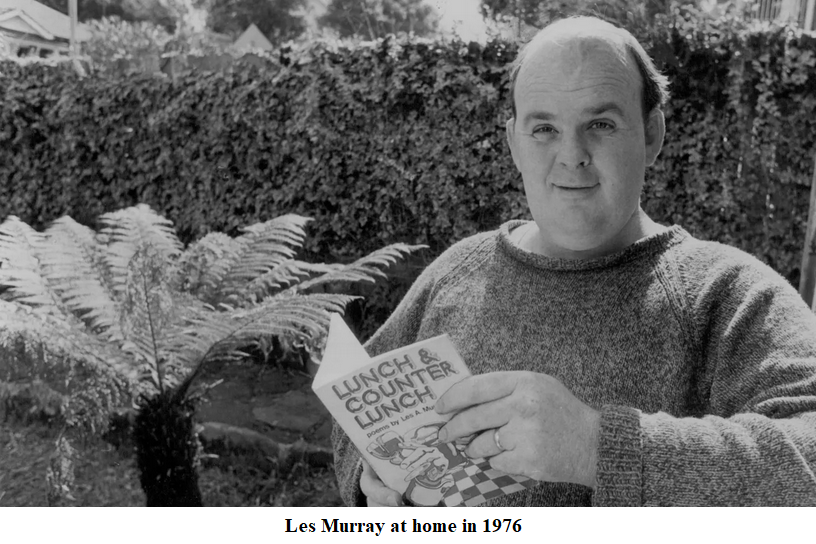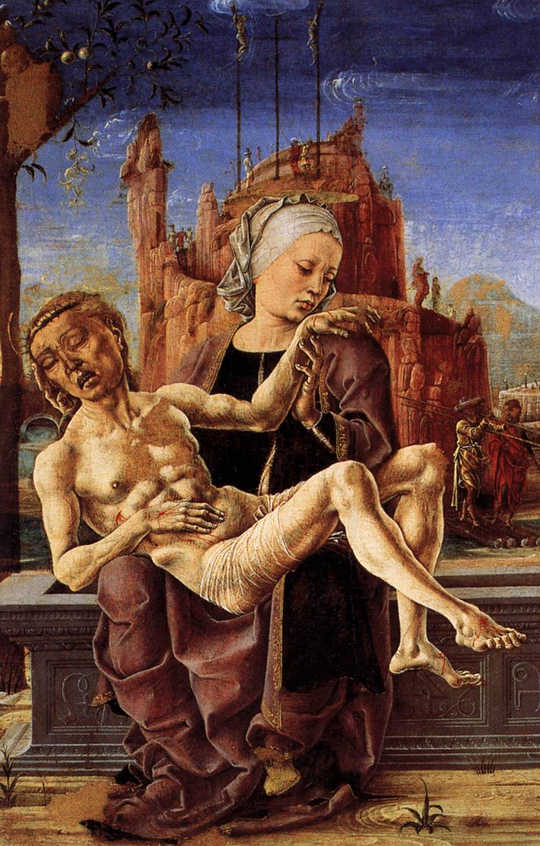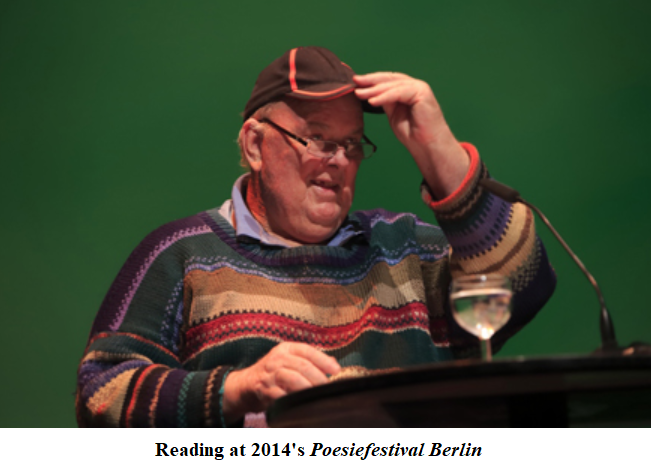
When I was doing research for my book on representations of the Virgin Mary in English poetry (See the Virgin Blest, Palgrave Macmillan, 2007), looking at numerous poets over the centuries, I made a couple of discoveries that surprised me. The first was the wide range of poets, from different religious traditions, who had written about Mary; and the second was the conspicuously small number of poems devoted to Mary from poets of pronounced Catholic persuasion, whether Roman or Anglican, in the corpus of their works. Writers such as John Donne, George Herbert and Gerard Manley Hopkins, for example, have only a few poems each, specifically about her.
Another surprising fact in this domain—which, in this case I was already aware of—is that one of the more prolific and inventive writers about the Virgin Mary in the long history of poetry in English is the Puritan, John Milton, giving the lie to the idea that Protestants regard the Mother of God dismissively as a deceased Roman Catholic woman. In his brief epic, Paradise Regained, following the more famous poem, Mary has a presence even more striking than in Paradise Lost. Indeed, we encounter a unique passage there, in the context of Marian poetry at large, as Mary’s words are reported by Christ himself, as she gives a summary of his life up to the point of his temptation in the wilderness, the principal subject of Paradise Regained. Further, Milton presents the Virgin Mother in the role of her Son’s instructor, paying significant tribute to her intelligence and wisdom (and this from a poet customarily derided for his allegedly misogynist prejudice). Accordingly, acknowledging Milton’s significant contribution to the idea of Mary as a subject for poetry, I took the title of my book from a phrase in the last stanza of his “Ode on the Morning of Christ’s Nativity”:
see, the Virgin blest
Hath laid her Babe to rest …
Her sleeping Lord with handmaid lamp attending;
And all about the courtly stable,
Bright-harness’d Angels sit in order serviceable.
Of course, quantity is far less important than quality. One of T.S. Eliot’s most beautiful poems is his only poem specifically devoted to the Virgin, the lyric, “Lady, whose shrine stands on the promontory”, which forms a section of Four Quartets. And there is Robert Lowell’s lovely short tribute, “Our Lady of Walsingham”, his only poem mentioning her, about the image of the Virgin in the Anglican shrine in that Norfolk village:
As before,
This face, for centuries a memory…
Expressionless, expresses God: it goes
Past castled Sion. She knows what God knows.
So when we come to Les Murray’s poetry about Mary, once again we find that the poet writes only a few poems in the course of his vast body of work, totalling just a couple of pages in the 700 pages of his Collected Poems. Among the questions that present themselves are those which we ask, in general, when considering the Marian poetry of other poets through the centuries: what is distinctive about the way these poems present Mary, and how are they representative of the poet’s thought more generally, as we discern it from reading his poetry at large?
The best-known of Murray’s Marian poems—as it is, indeed, one of his best-known poems—is “Animal Nativity”, which is part of the sequence, “Presence: translations from the Natural World”, where in some forty poems he surveys the individual characteristics of a cornucopia of animal and plant life, articulating his doctrine of what he calls “the centre of reality”, in response to the question which he asks in the poem “Sunflowers”, in this sequence: “What is presence?” And his answer is “the beginning mirrored everywhere”.
Accordingly, in “Animal Nativity”, the earthly presence of the Lord is evoked, signalling for us the importance, always, for Murray of what he terms “embodiment and incarnation”. What is striking, initially, here (given the title of the poem), is the inclusion of Mary and the mode of that portrait: she is introduced at the beginning, with utter (and unnamed) simplicity as “this girl”. The war-like, Homeric, pre-Christian classical world is disposed of by her agreement, at the Annunciation, initiating her unique and crucial role in the economy of salvation, as “The Iliad of peace”, no less, begins, and, immediately, the natural world not only springs into new life, but joyously so: “Now goats in trees, fish in the valley / suddenly feel vivid”.
Here is a poet truly in his element. The joie de vivre is palpable, as “swallows flit in the stable” and discern the embodiment of their own newly-created life in this human “hatchling” (if you please). Developing this astonishing idea—typical of Murray’s Emily-Dickinson-like ability to see things “slant”, from an odd and often endearingly amusing perspective, and to encourage us, thereby, as all good poets do, to see the world differently and anew—we have “cattle content that this calf / must come in human form” and “spiders discern a water-walker”, as Christ himself was to walk upon the waves. Only Murray, we could say, can make the kinship between the arthropod and the Lord seem inevitable. The beginning is indeed being “mirrored everywhere”.

Lest this imaginativeness may seem outré, Murray notes, not only wittily but with a monitory sub-text, “even humans will sense the lamb”, the Agnus Dei. So much depends on that word even there, as this poet typically alerts us to the ways in which essential truth and meaning can be obscured by enslavement, no less (the idea is ahead of us in the last stanza), to the complications and so-called sophistication of human intelligence. We encounter this in many places in Murray’s poetry.
Now, you may say, Mary, as subject, appears to have been forgotten as Murray, like Noah, lovingly displays his ark of the animals (he is, arguably, the greatest poet of the animal world). But ironically, the singularity of the introductory reference to her, “this girl”, is all the more emphatic for that distinctiveness in the context of this general, ramifying animalic tableau. Her agreement has set it all in motion, and it is all the more remarkable that that has come from a humble and—here at least—unnamed young woman. This poem is assuredly the Nativity from the perspective of the animals—who, as we know from the scriptures, are present at the scene—but Mary and Christ are securely here too:
He who frees from the old poem
turtle-dove and snake
who gets death forgiven
who puts the apple back
and the humblest of humans commune with the animals at the end, reconciled—in T.S. Eliot’s phrase—among the stars, at the still point of the turning world:
Dogs, less enslaved but as starving
as the poorest humans there
crouch, agog at a crux of presence
remembered as a star.
Real presence has rarely been so movingly and memorably evoked. The submission of Mary (as declared herself in the response to the angelic salutation nine months before, in her Magnificat in her acknowledgment of “the lowliness” of God’s “handmaiden”) is as securely present here among other humble beings, as is the celebration of the necessity of her agreement—the crux of her presence—which brought this new creation in Christ to birth.
 Next, in a Marian poem belonging to the long tradition of such works inspired by artistic representations of the Virgin, Murray takes as his subject the Pietà of Cosmé Tura (left), a fifteenth-century Italian painter. This is what is known as ekphrastic poetry, where in the imaginative act of contemplating a work of art, such as a painting or a sculpture, the poet explains and expands its meaning. Unlike the famous, gracious sculptured Pietà of Michelangelo of the same period, Tura’s, characteristically, features two physically somewhat distorted figures—Christ, especially, whose head seems too large for his frame, and a Virgin, perched on an open tomb, who turns away from her son’s knobbly (rather than wounded) body, at large, focusing precisely on one hand (the left hand, interestingly, possibly with its sinister connotations), which she has held up for close examination. Her attitude is one of curious assessment, as a physician or coroner might examine a body part, with an expression in which purse-lipped detachment is at least as evident as the pity and compassion the painting’s title requires, and with an apparent indifference to the body at large. Meanwhile, Christ perches precariously (about to fall to the ground) at her knees (especially her left knee, which seems almost not to exist). It is the strangest of Pietàs. And the word strangeness, appropriately, abides at the heart of Murray’s poem—and, indeed, as does the idea in much of his poetry, as we have suggested, as he focuses here on the “nadir” of Christ’s story, between death and resurrection—the word meaning the lowest point in a situation.
Next, in a Marian poem belonging to the long tradition of such works inspired by artistic representations of the Virgin, Murray takes as his subject the Pietà of Cosmé Tura (left), a fifteenth-century Italian painter. This is what is known as ekphrastic poetry, where in the imaginative act of contemplating a work of art, such as a painting or a sculpture, the poet explains and expands its meaning. Unlike the famous, gracious sculptured Pietà of Michelangelo of the same period, Tura’s, characteristically, features two physically somewhat distorted figures—Christ, especially, whose head seems too large for his frame, and a Virgin, perched on an open tomb, who turns away from her son’s knobbly (rather than wounded) body, at large, focusing precisely on one hand (the left hand, interestingly, possibly with its sinister connotations), which she has held up for close examination. Her attitude is one of curious assessment, as a physician or coroner might examine a body part, with an expression in which purse-lipped detachment is at least as evident as the pity and compassion the painting’s title requires, and with an apparent indifference to the body at large. Meanwhile, Christ perches precariously (about to fall to the ground) at her knees (especially her left knee, which seems almost not to exist). It is the strangest of Pietàs. And the word strangeness, appropriately, abides at the heart of Murray’s poem—and, indeed, as does the idea in much of his poetry, as we have suggested, as he focuses here on the “nadir” of Christ’s story, between death and resurrection—the word meaning the lowest point in a situation.
The poet speaks of Mary having “said the first Mass” in birthing Christ, making his body and blood really present in this world, at the Nativity—one recalls, again, Murray’s phrase, “embodiment and incarnation”. Just as the bread and wine become the body and blood of Jesus at each eucharist, she “made Godhead a fact” (the noun echoing the most solemn phrase from the recitation of the creed in Latin at Mass: “homo factus est” and in the Last Gospel: “verbum caro factum est”—and the Word was made flesh, at the end of Mass in the old rite). He has Mary questioning what remains of that true body now, in physical death, especially as Tura presents the corpse in prematurely aged state: Jesus’s physique could be that of an old man. Yet, Murray claims, in his closing verse-sentence, that the gift of the body of the Lord, which could have cost Mary her life (as an alleged adultress), remains perpetually within her, both as the Theotokos (the God-bearer) and, by implication, in terms of his abiding presence in Mother Church, that she signifies, in its perpetual offering of his body in the sacrifice of the Mass.
The poem is notable—unique, as far as I have read—among contemporary Marian poems for its declaration of eucharistic faith, and among Marian poetry, in general, for the unprecedented representation of Mary in the role of eucharistic priest (although depictions of the Virgin in Mass vestments were known in the Middle Ages). Note, too, how he has Mary open her arms, then “withdraw, / and come back”, anticipating, it would seem, the priestly actions at the altar in such as the “orans” or “orante” (or praying) gesture during the liturgy. The priest’s opening of his arms is interpreted as reminding us of Christ outstretched on the cross, opening his arms and drawing us to himself. We would probably be mistaken in imagining that in this concentration of liturgical references we sense Murray’s implied endorsement of female ordination. Rather, in ascribing them to her, they emphasise the uniqueness of her vocation, “blessed among women”. As with “Animal Nativity”, the poet’s focus is on the crucial issue of Mary’s role in the Incarnation and its extension (as the phrase goes) in the Church’s sacraments.
In The Idyll Wheel: Cycle of a Year at Bunyah, New South Wales, April 1986–April 1987, Murray writes—as he often does—of the region he knows best: the dairy country and sawmill towns of northern New South Wales (he was born in Nabiac), that “high cool country”, with a relish for the foibles and follies, as much for the endurance, pluck and eccentricity of the Murray folk themselves and their friends and neighbours, and, needless to say, of the animals that are an integral part of their lives. In “May”, in this sequence, with its subtitle “When Bounty Is Down to Persimmons and Lemons”—in other words, when there is little bounty, as winter is looming—he opens, “In May, Mary’s month”. If this recalls for us the beginning of Gerard Manley Hopkins’s Marian poem “The May Magnificat”, the irony is striking. In the ancient “reverdie” tradition of the celebration of new life in spring and summer, the re-greening of the earth in the northern hemisphere in April and May, Hopkins links that to the vita nuova of Christ’s conception:
Spring’s universal bliss
Much, had much to say
To offering Mary May.
Murray offers Mary May, but in a thoroughly, and antithetical Antipodean seasonal context: “when snakes go to sleep, / sunlight and shade lengthen, / forest grows deep”, while adopting the traditional four-line stanza and a regular rhyming scheme, as in Hopkins’s poem. Taking us into what Judith Wright (from the nearby New England region) calls “my blood’s country”, Murray wondrously and meticulously particularises what Hopkins called the “thisness” of those sawmill communities, as in onomatopoeia and personification combined, “wood coughs at the axe”, and the humblest and smallest creatures find their individuality encapsulated:
old horses grow shaggy
and flies hunker down
on curtains, like sequins
on a dead girl’s ball gown.
In place of Hopkins’s “universal bliss” of spring, we have Mary associated now with wintertime which—like autumn for John Keats—evidently has its own music.
As Hopkins writes, also, in the magnificent sonnet, “As kingfishers catch fire”, of the various minute components of the God-created natural and (always important to note this) man-created worlds, where every thing, as it were, “speaks and spells, / Crying What I do is me: for that I came”, so Murray shares this idea of vocation and realises it as brilliantly:
Grey soldier-birds arrive
in flickers of speed
to hang upside down
from a quivering weed
Or tremble trees’ foliage
that they trickle down through.
And in his jovial voice:
Women’s Weekly summer fashions
on the compost turn blue …
soon pyjamas will peep, though,
from the bottoms of trousers.
All is grist to this poetic mill of delighting in and affirming the created order. Here is a perfect balance between what has come from God in the natural and animalic creation, and what man, in the image of God, has created himself: so a stanza devoted to dogs is followed by one given over to the school-bus and its kids, and the poem closes with farmers about their business, with spanners, plough and tractors, as one thinks again of Hopkins, where—in “The Windhover”—“sheer plod makes plough down sillion / Shine” and, in another poem, his mention of “all trades, their gear and tackle and trim”. That is a lyric beginning “Glory be to God” and all of Murray’s poems, we remember, are dedicated “To the glory of God”. The keynote of “May” is the reference to Mary, the “beginning”, again, which introduces the celebration of God’s gift of the natural world and of the conflation of divine and human life within it, of which the mystery of the incarnation, the Word made flesh, is the eternal focus.
Then, contrastingly, we have the compact five lines of “Best Western”—an epiphanic poem, just a vignette, one verse sentence, but pregnant with meaning:
The calm couple have no objection
and the baby, he looks keen
to see a smoker hunch in from the snow
and fatten a patchwork quilt in the straw
of their kerbsite Nativity scene.
Here, for once, it seems, we are decidedly not in Australia. Not only is that motel and resort chain of American origin and ownership—although, of course, they have establishments across Australia, too—but this is a winter-time Nativity, in the snow. Yet some familiar Murrayian/Marian notes are struck: as in “Animal Nativity”, this Mary and Joseph are the poorest of the poor, can afford no room at the inn, and are relying on the kindness of strangers. One such, a smoker—channelling the gift of incense of the Wise Men in the biblical account—spreads, fattens, a quilt he has brought for their straw bedding for their infant, who looks keenly at the gift-giver. It may be that the title of the poem, in addition to the witty allusion to the motel chain, is also celebrating the “best” of what we can offer in the way of hospitality and kindness beyond what the business world can credit. Although the setting is urban, with the kerbsite, there is a timeless rustic quality as well, in the patchwork quilt and straw.

Les Murray’s best-known poem is probably “An Absolutely Ordinary Rainbow”, with its unnamed weeping man in Martin Place. The emphatic oxymoron of the title always strikes us—for we would think there is nothing ordinary about any rainbow, certainly not “absolutely” so—and especially when we remember the rainbow’s scriptural, covenantal significance, incomparably poeticised by Milton in Paradise Lost: God will:
set
His triple-coloured bow, whereon to look
And call to mind his Covenant. Day and night,
Seed-time and harvest, heat and hoary frost,
Shall hold their course, till fire purge all things new
Both Heaven and earth, wherein the just shall dwell.
It is through the absolute ordinariness of life that, distinctively, Murray continually perceives the extraordinary manifestation of the Godhead: “only the smallest children / and such as look out of Paradise” come near (physically and spiritually) the weeping man in that poem, “and sit at his feet, with dogs and dusty pigeons”. And it is in this way that his Marian poetry resonates with his poetic vision at large, and is typical of it. Whether we see the Virgin blest among the animals, outside a Best Western motel, amongst the landscape and creatures of a northern New South Wales winter or even in the at-once-familiar but utterly other-worldly role of the priest at the eucharist, this characteristic strategy of revealing to us the mystery of God mirrored in the real presence of the world about us, especially in its humblest forms, is at the heart of Murray’s genius and his vocation as a poet.
Barry Spurr, Australia’s first Professor of Poetry, succeeded Les Murray as Literary Editor of Quadrant in 2019. This article was originally presented as a paper at the conference, “Les Murray: Life, Poetry & Legacy”, at Campion College, Sydney, on September 24
 Sign In
Sign In 0 Items (
0 Items ( Search
Search










As a contemporary at Sydney University, I got to know Les quite well. At some stage, he decided to become a Catholic, presumably out of sincere belief in its doctrines. But that move also had the advantage of giving him an audience and readership, and a community he could belong to. Other Australian writers (eg Thomas Kenneally) have got themselves started as literary ‘names’ in that same manner.
The (Irish derived) Australian Catholicism has had a certain siege mentality since the days of the Rev. Samuel Marsden aka ‘The Flogging Parson.’ (See link below.)
After considering the writings of the French sociologist Emile Durkheim on the subject of religion, I have formed the view that any community or congregation is actually worshipping itself. (Therefore no tolerance allowed for dissenters and heretics.) What we believe is far less important than the fact that we all believe it together. Believing is thus the means to belonging. And we all need something to belong to; especially Les, who lost his mother in his own childhood.
‘Catholic education faced opposition from those who thought it promoted superstition. The Rev Samuel Marsden about 1807 hoped that Catholicism would soon die out if children were all educated at non-Catholic schools, while Henry Parkes in 1851 called for action against the “grovelling superstition which seeks to fetter and degrade.” In turn Archbishop Vaughan called state schools “seedplots of future immorality, infidelity and lawlessness.”’
.
https://australiancatholichistoricalsociety.com.au/history-resources/controversies-and-scandals/
A delightful article. I just wonder what Les Murray would have written between 1916 and 1919, had he been around at the time.
Ian MacDougall reveals, if not revel, in something of today’s biases. The reference to Durkheim is quite misleading. The French scholar’s anti-religious stance is familiar. His scholarship less so—as the German sociologist of religion, Hans Joas, makes clear in his magnificent work, “The Power of the Sacred” (2021). Congregations could, I suppose, on occasion give the impression of “worshipping itself”, but not often. Instead they tend more in their worship to bring God alive amongst them. I have, in recent years in my writing of religion and the Great War (using South Australia as my archival base), followed the advice of Joas’s late friend and collaborator, Robert Bellah that “a religious life is very much a form of practice, a form of relationship”.
In part it is a question of one’s culture. In the 1910s the words of Christianity were known to more or less all. Murray’s poetry has those words emerge from the world around him. A century and more ago bereaved next-of-kin of members of the First A.I.F. would look upon the painting, “Descent from the Cross” by Johann Victor Kramer (1886–87) in their state art gallery. The analogy with their own loss was clearly understood and deeply moving. Even wordlessly, and if only slightly, they found ‘Strength to Lighten Sorrow’.*
* Mrs. Willett Bevan, ‘Easter, 1915’, Register, 2 April 1915, p. 5.